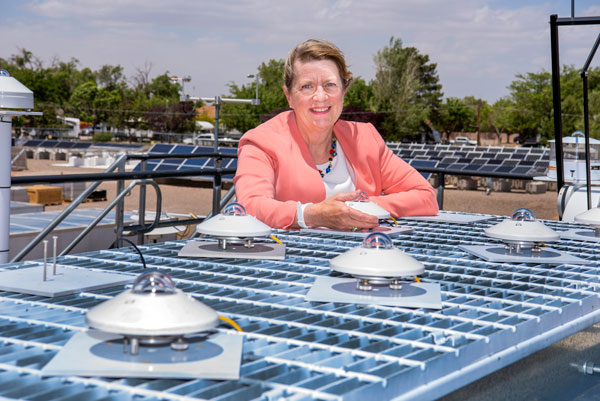
An international community of research institutions, led by Sandia, to advance photovoltaic research and expand solar markets formally launched its work on May 14 in Munich, Germany, with a memorandum of understanding.
Called the Photo-Voltaic Collaborative to Advance Multiclimate Performance and Energy Research, or PV CAMPER, the organization provides a unique platform for studying photovoltaic performance and reliability in multiple, diverse environments and climates, said project lead Laurie Burnham.
“What we’ve created is a network of research-grade field sites around the world that allows members to share data with confidence,” Laurie said. “But PV CAMPER also works because of its collegiality. There’s a trust and camaraderie to the work we’re doing, each learning and building off the other, challenging best practices and collaborating with organizations that share the same values.”
Laurie said the idea for PV CAMPER came out of a meeting in South Korea two years ago, where she presented information about the Regional Test Center program. The RTC, managed by Sandia for DOE, supports studies of emerging solar technologies at multiple U.S. field sites. An impromptu discussion about replicating the RTC concept globally led to the idea for the collaborative, and the core group has expanded from five to 11, with more members likely.
A solar-intensive future PV CAMPER organizations have the common goal of a more solar-intensive future, Laurie said. The umbrella organization will offer:
- A repository of high-fidelity meteorological and PV performance data from geographically and climatically diverse sites.
- Broad expertise in areas of PV research such as soiling losses, the uncertainty drivers impacting solar-energy yields, such as cloud persistence, moisture and airborne particulates, and spectral responsiveness.
- Data to support the design and optimization of PV systems for specific operating environments to increase markets and expand the solar industry.
Member organizations will transmit data daily to a cloud database for access by the collaborative. They also will adopt PV CAMPER baseline characterization and operation and management protocols and participate in collaborative research and development.
PV CAMPER signatory organizations include Sandia; Universidad Federal de Santa Catarina in Brazil; Anhalt University of Applied Sciences, and Fraunhofer Center for Silicon Photovoltaics in Germany; Institut de Recherche en Energie Solaire et Energies Nouvelles in Morocco; Qatar Environment and Energy Research Institute in Qatar; Solar Energy Research Institute of Singapore; and Yeungnam University, Korean Institute for Energy Research and Korea Testing Laboratory in South Korea. Other institutions are lining up to join, Laurie said.
DOE has funded Sandia’s leadership of PV CAMPER for one year, to help get the collaborative off the ground, Laurie said, while the other 10 signatories self-fund their participation and may assume leadership roles in the future.
“What matters is that the consortium is seen as a high-value endeavor by a growing number of institutions and serves as a catalyst for collaboration in the global transition to a low-carbon economy,” she said.